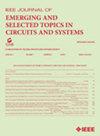共封装光学器件中的异质集成
IF 3.8
2区 工程技术
Q2 ENGINEERING, ELECTRICAL & ELECTRONIC
IEEE Journal on Emerging and Selected Topics in Circuits and Systems
Pub Date : 2025-07-21
DOI:10.1109/JETCAS.2025.3590744
引用次数: 0
摘要
生成式人工智能(GAI)和大语言模型(LLM)要求数据中心具有更高的带宽和更高的能源效率。为了实现这一目标,共封装光学(CPO)是利用先进封装与集成光子学的未来方向之一。然而,这种紧密集成使数据中心系统设计和多物理场交互变得复杂,包括电气、光学、热、机械和材料方面。本文讨论了CPO中的异构集成问题。以两个案例为例说明了多物理场封装。回顾了HI技术面临的挑战,并提供了相应的缓解方法,包括1)电域中以及电与光相互作用之间的热串扰,2)宽与慢和窄与快通道链路的SIPI,以及3)中间体材料的优缺点。集成光子学部分主要由1)光源、2)光耦合策略、3)封装先进的光纤连接方案以及4)新型微透镜、光学TSV、三维波导、光学3DIC等集成光学技术组成。本文旨在确定CPO中的关键HI挑战,并指出未来CPO系统发展的潜在解决方案。本文章由计算机程序翻译,如有差异,请以英文原文为准。
Heterogeneous Integration in Co-Packaged Optics
Generative artificial intelligence (GAI) and Large Language Model (LLM) require data center to have higher bandwidth, and better energy efficiency. To achieve this, Co-packaged optics (CPO) is one of the future directions that leverages advanced packaging with integrated photonics. However, this tight integration complicates data center system design and multi-physics interactions, including electrical, optical, thermal, mechanical, and material aspects. In this paper, heterogeneous integration (HI) in CPO is discussed. Multi-physics packaging is exemplified with two cases. Challenges in HI technologies are reviewed and corresponding mitigation methods are provided, including 1) thermal crosstalk within the electrical domain and between the electrical and the optical interaction, 2) SIPI of wide-and-slow and narrow-and-fast channel links, and 3) pros and cons of interposer material. Integrated photonics part is introduced and is composed of 1) light sources, 2) optical coupling strategies, 3) fiber attach schemes with advanced packaging, and 4) integrated optical technologies, e.g. novel microlens, optical TSV, 3D waveguide, and optical 3DIC. This article aims to identify the key HI challenges in CPO and points out the potential solutions for future CPO system advancement.
求助全文
通过发布文献求助,成功后即可免费获取论文全文。
去求助
来源期刊

IEEE Journal on Emerging and Selected Topics in Circuits and Systems
ENGINEERING, ELECTRICAL & ELECTRONIC-
CiteScore
8.50
自引率
2.20%
发文量
86
期刊介绍:
The IEEE Journal on Emerging and Selected Topics in Circuits and Systems is published quarterly and solicits, with particular emphasis on emerging areas, special issues on topics that cover the entire scope of the IEEE Circuits and Systems (CAS) Society, namely the theory, analysis, design, tools, and implementation of circuits and systems, spanning their theoretical foundations, applications, and architectures for signal and information processing.
 求助内容:
求助内容: 应助结果提醒方式:
应助结果提醒方式:


